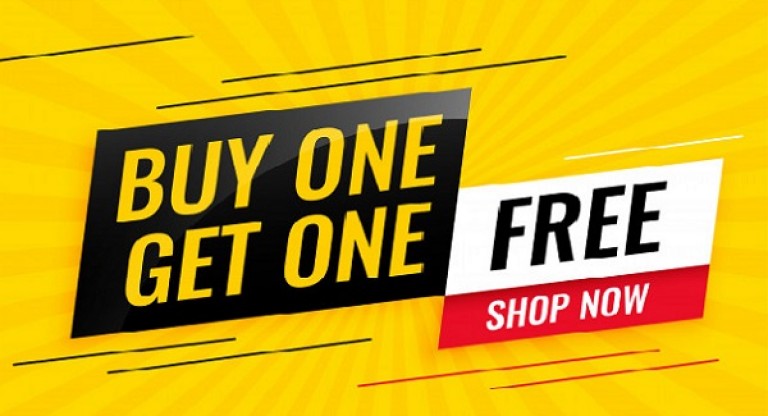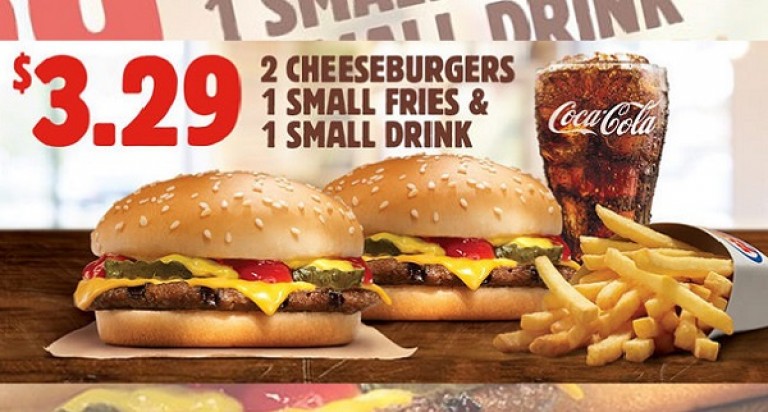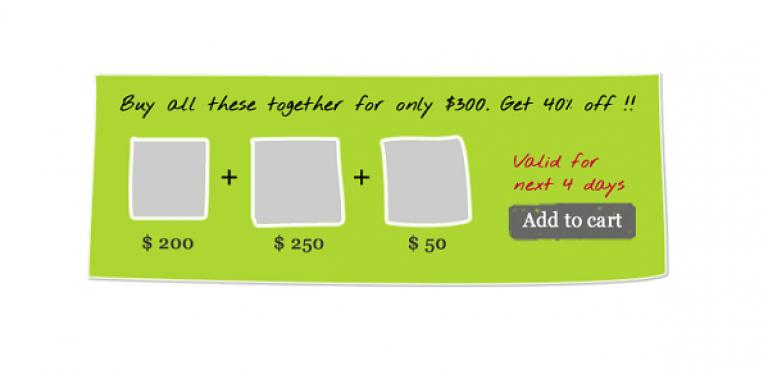
Bundle Pricing Strategy: Advantages and Disadvantages
In every store, you see signs that say “Buy one get one free”, and “Buy this product and get a discount for that product”. The situation is similar at the fast-food restaurant “Buy meal deal, save $3”. Everywhere you look there are special offers and discounts for buying more products.
This is called a bundle pricing strategy. But what is it really and how does it work?

A bundle pricing strategy is successfully utilized in technology and electronics, telecommunications, food and beverage, software and digital services, travel, and tourism industries which will be clearly shown through examples in the article. Also, it is one of the common retail and eCommerce pricing strategies.
This is a pricing strategy in which the seller combines several products and then sells them at a single price instead of charging separate prices for each. This means a bundle is a product on its own since it has an ID, price, attributes, etc. It’s important to say that this strategy works well for products and services equally.
The best example for illustrating bundle pricing strategy is restaurants. If you go to eat at one, you can get dinner for $40. It will include an appetizer, the main course, and dessert. But you can get all those separately and pay more, for example, $10 for an appetizer, $25 for the main, and $10 for dessert. So, if you take the deal they offer you’ll pay $5 less. If we are talking about fast-food restaurants, the situation is the same, only the prices are a lot lower.

There are two basic bundle pricing strategies, which are pure bundling and mixed.
Pure bundling
Pure bundling represents a bundling strategy where the products are only sold together. In some cases, products don’t exist outside the bundle. The best example of that is TV channels offered by cable providers. They offer several packages and each one has a different combination of channels.
Even if you are ready to pay the full package price because you want several specific channels from it, you will get all other channels along. For example, if you wanted Disney Junior, you get Disney Channel and Disney XD as part of the bundle at the same price.
Pure bundling has three subcategories:
- Joint bundling is when the two products are offered together for one bundled price.
- Leader bundling is when a leader product is offered for a discount if purchased with a non-leader product, accessory, etc.
- Mixed-leader bundling is a type of leader bundling with the added possibility of buying the leader product on its own.
Mixed bundling
Mixed bundling is a strategy where a company offers products both as a bundle and individually. For example, customers have options to buy complete cable, internet, and telephone packages as a bundle at a discounted price or each package separately at a regular price.
This approach provides flexibility and caters to different customer preferences as they appreciate the ability to choose. Those who see value in the bundle will opt for it, while others can purchase only what they need, enhancing customer satisfaction.

What are the advantages and disadvantages of bundle pricing strategy?
Overall, bundle pricing is a versatile strategy that, when executed well, can enhance customer choice and drive sales growth. Let’s get familiar with the main advantages and disadvantages to afterward list steps to follow to execute bundle pricing strategy effectively, ensuring it meets customer expectations and delivers tangible benefits to both the customer and the business.
Advantages of bundle pricing strategy
The bundle pricing strategy attracts different customers: buyers looking for deals, convenience, or advice on items that complement each other.
Some consumers are ready to spend more than initially wanted when offered a deal they like. Especially if offered the product they already wanted to buy with something they wanted to try but never got the chance.
Bundling can help move inventory, particularly for items that may not sell as well individually. By including less popular products in a bundle with best-sellers, businesses can clear out stock more efficiently. This strategy not only improves inventory management but also enhances cash flow.
Moreover, product bundling is an ideal opportunity to introduce new products, increasing awareness and potentially driving future sales.
Additionally, bundling can differentiate a business from its competitors. Offering unique or customizable bundles attracts customers looking for value and convenience. This differentiation can lead to higher customer retention rates as satisfied customers are more likely to return for future purchases.
Disadvantages of bundle pricing strategy
The biggest disadvantage of the bundle pricing strategy is that it can lead to product cannibalization. Customers who might have bought several items at full price may opt for the cheaper bundle instead, leading to lower overall revenue.
For example, if you are selling a laptop and a printer together, but also separately, more printers will be sold through the bundle than individually due to the lower price. This does cause lower profit for that particular product.
Customers may feel that they are being forced to buy items they do not need or want. Also, offering too many bundles can overwhelm customers, leading to choice overload and decision fatigue. This can ultimately drive potential buyers away if bundles often include less desirable products or are confusing.
Influence of bundling on customer experience
When executed effectively, bundling creates a perception of added value and cost savings. Customers appreciate bundles that offer a lower combined price than the sum of individual products, making them feel they are getting a good deal. This perception of saving money can lead to increased customer satisfaction and loyalty. Additionally, bundling enhances convenience, particularly when complementary items are paired together, such as a smartphone with a case and screen protector. This saves customers time and effort in searching for related products, simplifying their shopping experience.
Furthermore, bundling can enhance the overall user experience by providing comprehensive solutions. For example, a bundle consisting of a laptop, software, and accessories ensures that customers have everything they need in one purchase, leading to greater satisfaction. Bundles also introduce customers to new products they might not have considered, which can be a pleasant surprise if the additional items prove useful. Limited-time bundles or exclusive offers can create a sense of urgency and exclusivity, making the purchase more attractive and exciting for customers.
Subscribe to our newsletter!
Latest pricing news, eCommerce updates and more!
Effective execution of bundling
- The first step in effective bundling is understanding the target market’s needs and preferences. Market research and gathering customer feedback can provide insights into what products are frequently bought together or which combinations would be most beneficial. Bundles should be relevant and appealing to the customers, addressing their specific needs and enhancing their experience. For instance, a fitness enthusiast would appreciate a bundle that includes a fitness tracker, workout apparel, and a water bottle.
- An effective bundle should offer clear and transparent value. Customers should easily perceive the savings they get from purchasing the bundle instead of individual items. Displaying the original prices of individual products alongside the bundle price helps communicate the discount and added value. For example, showing that buying a camera, lens, and bag separately costs $1,200, while the bundle costs $1,000, highlights the $200 savings, making the bundle more attractive.
- The products in a bundle should naturally complement each other and provide a cohesive solution to the customer. Complementary products enhance the usability and enjoyment of the primary product. For example, bundling a smartphone with a charger, a case, and earbuds makes sense as these accessories are commonly used together.
- Allowing customers to customize their bundles can significantly enhance their satisfaction. Offering a base product with optional add-ons lets customers tailor the bundle to their specific needs. For example, a laptop purchase could come with options to add a mouse, keyboard, or software package. Customizable bundles cater to individual preferences and make customers feel they are getting exactly what they need.
- Creating a sense of urgency and exclusivity can make bundles more appealing. Limited-time offers or exclusive bundles available only to loyal customers or during special promotions can drive quick decisions and boost sales. Highlighting that a bundle is a special offer or available for a limited period encourages customers to act promptly to avoid missing out.
Understanding advantages and disadvantages is crucial to implementing a bundle pricing strategy effectively and mitigating potential downsides. If businesses can offer clear value and relevance to customers while effectively managing pricing and inventory complexities, it is safe to offer bundling. However, it’s crucial to balance bundled and individual options to avoid overwhelming or frustrating customers and ensure profitability.



